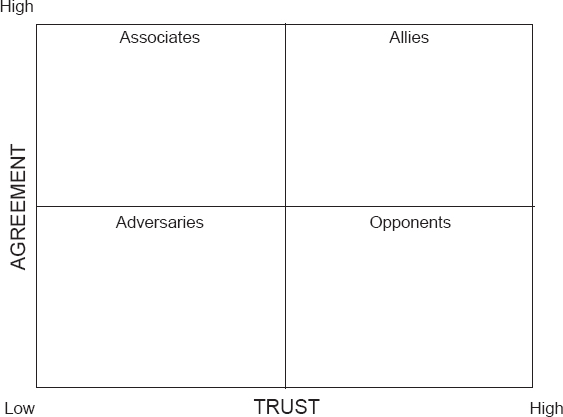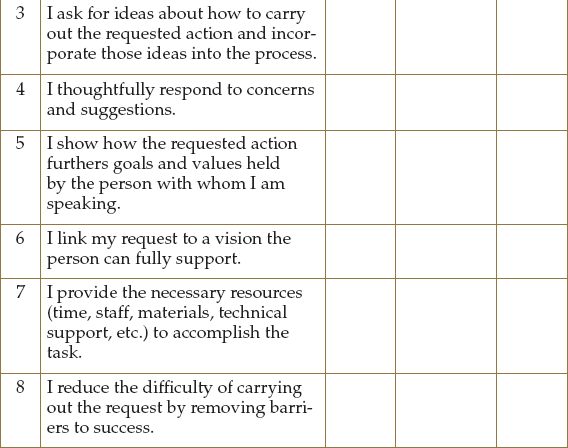Influence Tactics

When you make a simple request, people are likely to carry it out provided that it does not negatively affect them. If your request is clearly legitimate, relevant to them or their role, and something they can do, resistance will probably be minimal. Selecting and developing a broader set of influence tactics becomes more important when your request is perceived as unpleasant, inconvenient, or inconsistent with their goals, values, or intentions. If it is not immediately obvious to other people that complying with your request is beneficial or necessary, it can be particularly difficult to influence their actions.
Table 1 lists influence tactics that research has identified as effective in different situations and with different people. In Leadership in Organizations, Gary Yukl divides eleven tactics into two groups: four core tactics that research suggests are most effective and most widely used, and seven supplementary tactics that leaders often use in conjunction with the core tactics.
Stakeholder Analysis Worksheet
Identify the stakeholders important to you, and map them onto the grid. Consider how your choice and use of influence tactics change with different groups.

Table 1. Proactive Influence Tactics
Core Influence Tactics
Supplementary Influence Tactics
Apprising |
You explain how carrying out a request or supporting a proposal will benefit the person or his or her organization or cause. |
Ingratiation |
You use praise and flattery before or during an attempt to influence the target person to carry out a request or support a proposal. |
Exchange |
You offer something the person wants, or offer to reciprocate at a later time, if the person will do what you ask. |
Personal appeals |
You ask the person to carry out a request or support a proposal as a personal favor based on friendship or the person’s kindness. |
Legitimating |
You seek to establish the legitimacy of a request or to verify that you have the authority to make the request. |
Pressure |
You use demands, threats, frequent checking, or persistent reminders to influence the person to do something. |
Coalition |
You enlist the support of others to help you in influencing the person, or you use their endorsement of your request or proposal in your influence attempt. |
Copyright ©2001 by Gary Yukl. Used with permission.
Which Influence Tactics Do You Use?
Pay attention to which of the influence tactics in Table 1 you use most often and which ones you seldom use. You may be overusing or underusing various tactics. Being able to effectively use different tactics can help prepare you to use your influence more effectively with different kinds of stakeholders and in different situations.
Research reveals that the four primary influence tactics are the most effective for creating commitment. If you are adept at these tactics, you will probably be successful in influencing others.
To assess the influence tactics you currently use, complete the Your Use of Core Influence Tactics Worksheet. Granted, this simple self-assessment is not a rigorous, empirical examination of your use of influence tactics or an inventory of how people practice influence in your organization. But if you round out your self-assessment by asking others for their impressions and observations of how you influence, you can use all of that information to get a practical sense of what tactics you can use more often and which ones you can rein in. If you find that you want to improve your use of certain tactics, practice in low-risk situations and find a role model (someone who is adept in the tactic) to help you measure your progress.
Your Use of Core Influence Tactics Worksheet
Place a check mark in the cell with the best response for each of the statements below. As you respond to the statements, think about how you typically approach making a request of a person or group. Although your choice of influence tactics can depend on whom, why, where, and when you influence, this exercise is intended to provide a general sense of the tactics you typically use.

Items 1 and 2 are examples of rational persuasion.
Items 3 and 4 are examples of consultation.
Items 5 and 6 are examples of inspirational appeals.
Items 7 and 8 are examples of collaboration.
Review which of these four influence tactics you tend to use most and least. How well have these tactics worked for you? Are there any tactics you may be overusing or underusing?
The first step toward more successful influencing is to consider individual personalities, roles, goals, and objectives.

